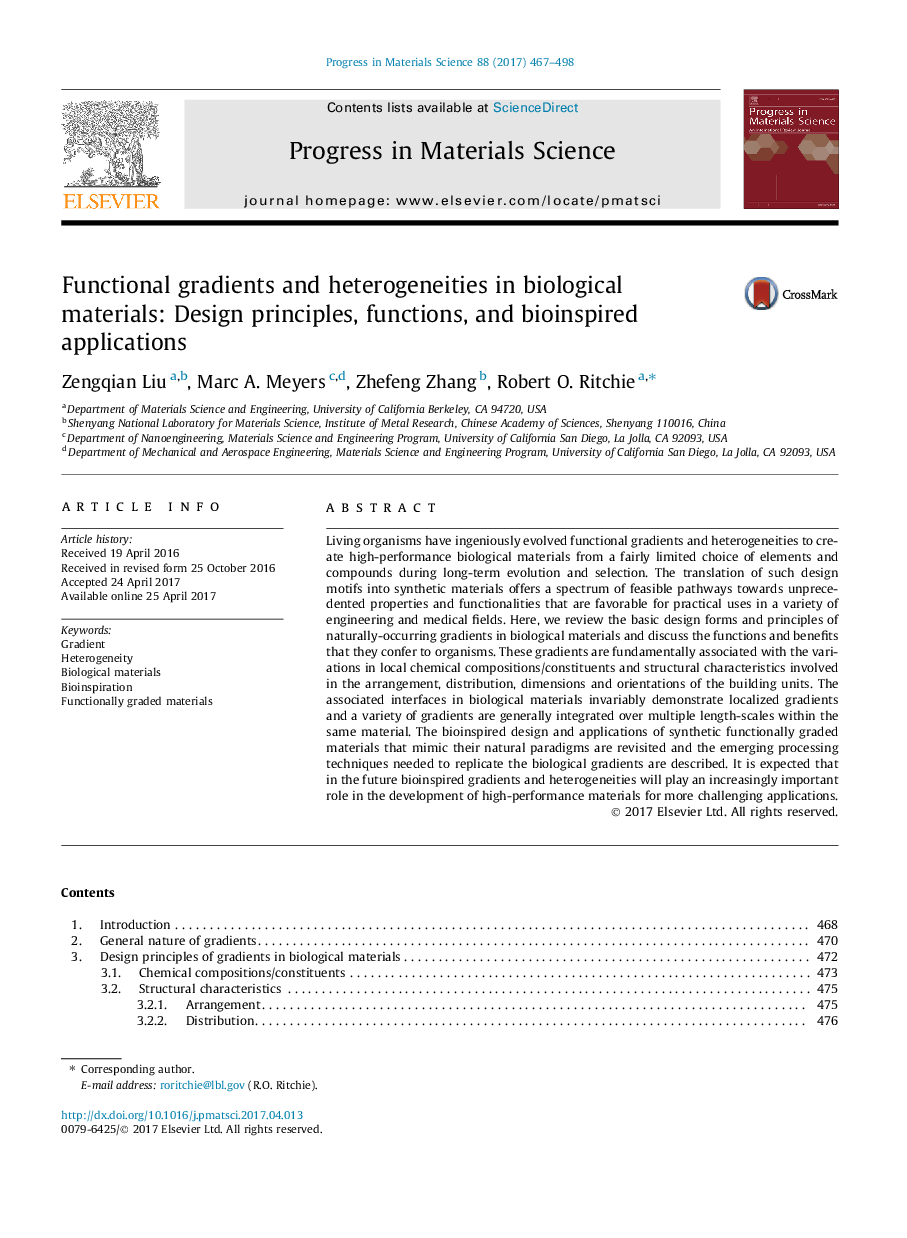| Article ID | Journal | Published Year | Pages | File Type |
|---|---|---|---|---|
| 5464327 | Progress in Materials Science | 2017 | 32 Pages |
Abstract
Living organisms have ingeniously evolved functional gradients and heterogeneities to create high-performance biological materials from a fairly limited choice of elements and compounds during long-term evolution and selection. The translation of such design motifs into synthetic materials offers a spectrum of feasible pathways towards unprecedented properties and functionalities that are favorable for practical uses in a variety of engineering and medical fields. Here, we review the basic design forms and principles of naturally-occurring gradients in biological materials and discuss the functions and benefits that they confer to organisms. These gradients are fundamentally associated with the variations in local chemical compositions/constituents and structural characteristics involved in the arrangement, distribution, dimensions and orientations of the building units. The associated interfaces in biological materials invariably demonstrate localized gradients and a variety of gradients are generally integrated over multiple length-scales within the same material. The bioinspired design and applications of synthetic functionally graded materials that mimic their natural paradigms are revisited and the emerging processing techniques needed to replicate the biological gradients are described. It is expected that in the future bioinspired gradients and heterogeneities will play an increasingly important role in the development of high-performance materials for more challenging applications.
Related Topics
Physical Sciences and Engineering
Materials Science
Nanotechnology
Authors
Zengqian Liu, Marc A. Meyers, Zhefeng Zhang, Robert O. Ritchie,
